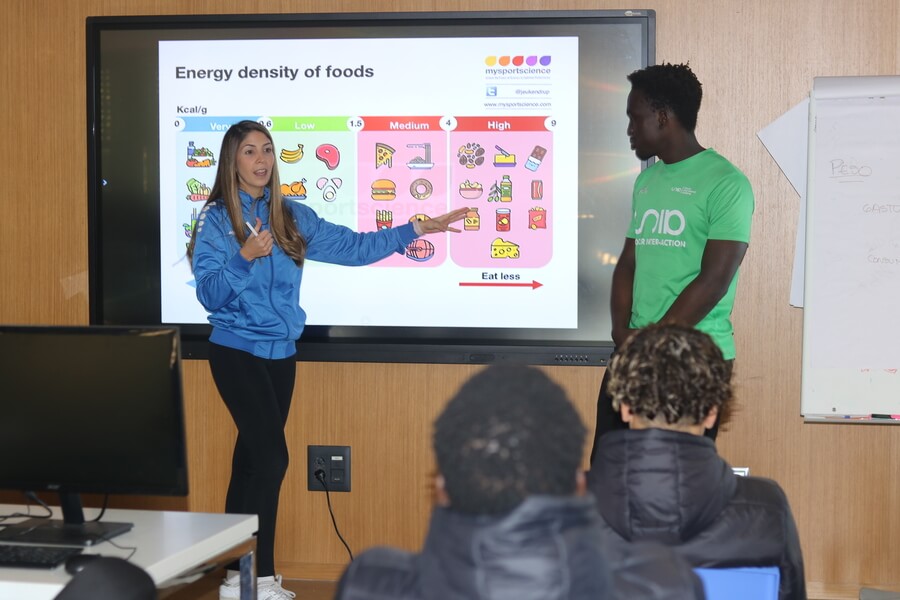The practice of football, like any other sport in which there is contact, carries a certain risk of injuries of a wide variety of types and severity, the most common being muscular, tendon and ligament injuries.
Although it is a fact that the athlete is exposed to injury when playing both football and any other sport, we have tools to minimise their impact on the footballer. To do this, two types of techniques must be used to manage these injuries: treatment once they appear and prevention, which is of vital importance to avoid them and to shorten the time and symptoms they cause.

Injury prevention in football
The main objective of prevention is to control the factors that can cause an injury. There are certain techniques and strategies that can help to avoid minor injuries, which occur quite frequently, and to recover better and/or faster when more serious injuries occur.
Types of Injury Avoidance Strategies
- Pre-match strategies.
- Strategies during the match.
- Post match strategies.

Pre-match
The first and essential strategy is to achieve a good physical condition. This is essential and is the one that will prevent the most injuries: we will not run a marathon if we have not prepared for it beforehand. Adequate physical condition will be achieved in training, both in the field and in the gym, with both endurance and strength exercises.
Active mobility exercises prior to the match and training are also very important, as well as a good warm-up with gestures used during the match. These prepare the body to be able to perform the actions more precisely and consciously.

During the match
One of the extrinsic causes of injury has to do with equipment: good condition of boots in particular, but also of goalkeeper gloves, shin pads and other clothing can prevent injuries. Being comfortable means playing with more concentration.
It is also vital to listen to the signals our body gives us, and to take care of ourselves: if I have given myself a painful blow or sprained my ankle and it hurts when I run, it is important to listen to the pain and stop. A frequent cause of injury is forcing: finishing a game playing in pain, or wanting to shorten recovery times to get to a match are examples of this.

After the match
Good eating and resting habits are essential for any athlete. First of all, a healthy and balanced diet will help us to recover the energy consumed in the match. In addition, it has proven psychological effects, being useful not only physically but also mentally.
On the other hand, a good rest will allow us to continue training during the week and not arrive at the week’s match with fatigue. This will help in the prevention of injuries, as we will be able to compete in a more hygienic and comfortable way, which will help us to give the best of ourselves.

Working with physiotherapy professionals
In football, we work with physiotherapists, sports doctors, physical trainers, nutritionists and psychologists to enable the athlete to perform at the highest level. The type of work to be carried out is multidisciplinary, using different tools from each of these disciplines.

Multidisciplinary team at SIA Academy
A multidisciplinary team is one in which different professions from the same branch are combined to achieve a common goal.in football, the physiotherapist will help athletes to their full physical health, through prevention, education and treatment. The sports doctor diagnoses, treats and plans the recovery of injured athletes.
The physical trainer will ensure that all players have the physical performance necessary to meet the demands of competition. The nutritionist will advise on the optimal diet for each player, taking into account their tastes and specific needs.

Finally, the psychologist will study the conditions that help the players’ performance and provide them with resources so that they can compete better. The common goal of the team will always be that the athlete can perform optimally, which will definitely help to prevent and avoid injuries.






